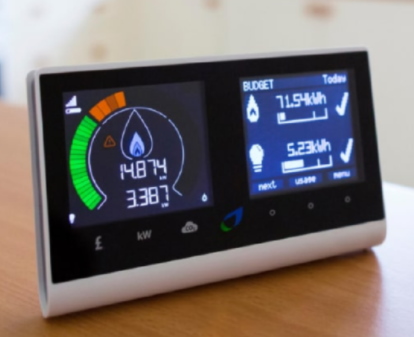SMART Meters: More info for households
Date:
14th October 2021SMART Meters are being fitted into more and more homes. Giving you more information about how much energy you are using, they allow you to implement ways to be more efficient with your energy usage and help save money on your bills.
What is a SMART Meter?
Unlike traditional meters, which simply register a running total of energy used, smart gas and electricity meters can record half-hourly price and consumption data and provide automatic meter readings to your energy supplier.

Most homes have two meters, one for gas and one for electricity – both will be replaced with smart meters. You will also be offered an In-Home Display (sometimes referred to as an IHD), an easy-to-use handheld device that sits within your home.
This will show you the cost and amount of energy you are using, updating every 30 minutes for gas and in near real-time for electricity.
The installation will also include a communications hub, which allows the smart meters and IHD to communicate with each and links your smart metering system to the secure national smart meter network.
How do I get a smart meter?
The government has required energy suppliers in England, Scotland and Wales to provide smart meters to their customers.
Get in touch with your energy supplier, which can arrange for smart meters to be installed at a time and date that suits you. You will not be charged for the installation.
Smart meter benefits
National benefits
Smart meters are underpinning the transition to a greener, more reliable energy system. Our latest analysis shows that the rollout is delivering more benefits to the country than it is costing to deliver.
Engineers will know much faster when power cuts have occurred and will have better information about what caused them. This will enable them to conduct quicker and cheaper repairs and reduce the risk of similar problems occurring in the future.
Smart meters are also helping to reduce our reliance on imported fossil fuels. For example, innovative smart tariffs allow consumers to save money by using energy away from peak times or when there is excess clean electricity available. Some customers have even been paid to use electricity during very windy days.
Consumers can opt for electric vehicles, heating systems and smart appliances, such as washing machines and dishwashers, that can connect to the smart metering system to access pricing data. Activity can be programmed to automatically take advantage of cheaper rates, reduce the impact on our energy grid and save consumers money.
Consumer benefits
Smart meters have a wide range of benefits for individual consumers. For example, customers with smart meters are only charged for the energy they use rather than receiving estimated bills, helping them to budget better.
Smart meters come with an In-Home Display (IHD) which shows households their energy use in near-real time, expressed in pounds and pence. Evidence shows that consumers are using this information to manage their energy use, save money and reduce emissions that lead to climate change.
Because smart meters lower costs to energy suppliers by avoiding manual meter reads and reducing billing queries, some of the cheapest tariffs are available to people who have smart meters installed.
Prepayment customers see additional benefits, as smart meters allow:
- customers to top-up remotely without leaving home
- customers to see credit balances on an easy-to-access In-Home Display, so they do not unknowingly run out of credit
- customers to top-up automatically, so that if credit runs out at night or when the shops are shut, they will not be left without power
- energy suppliers to see when customers are not being supplied with energy so they can offer timely support
Switching energy supplier
Consumers can switch energy supplier no matter which type of meter they have. Smart meters can make switching energy supplier easier, without any interruption to energy readings or bill payments.
Energy suppliers are now installing the latest generation of smart meters, which are connected to a national smart metering communications network from the outset, making them compatible between suppliers from the point of installation.
A number of energy suppliers have also installed first generation smart meters, which initially used their own communication systems. This means consumers with these meters may temporarily lose some smart functionality when they switch. Meters will continue to record energy use accurately like a traditional meter until smart services are restored.
First generation smart meters are being moved onto the national network so that customers regain and keep smart services. Meters are being transferred remotely, without consumers needing to take any action, and priority is given to meters which have temporarily lost some of their smart functionality.
